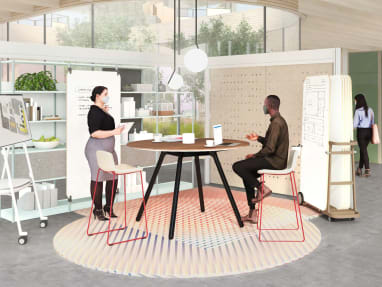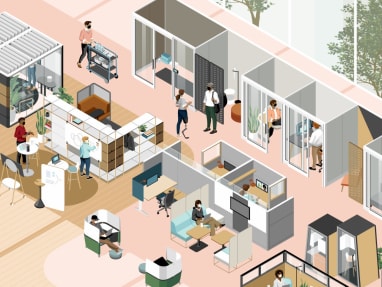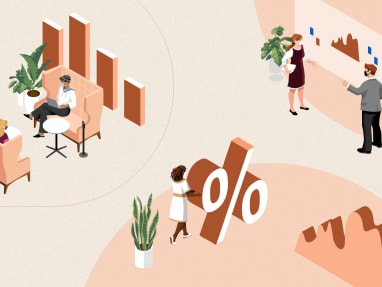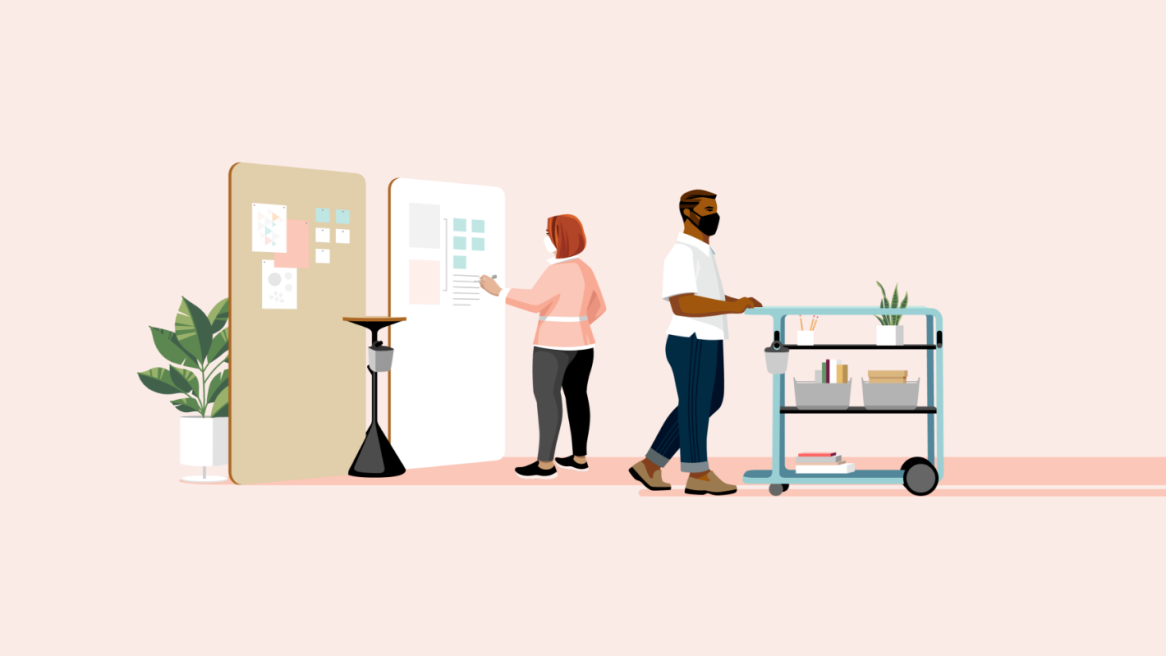After having spent months working from home, people’s expectations of the workplace have changed. They want and need a safe and compelling workplace that’s inspiring, more flexible and helps them get work done. They also want more control over where and how they work and designers will need to create spaces to solve for an even more diverse set of needs (Read more about people’s new needs in Work Better). Different design approaches will be required to create spaces that support the new ways people want to work and the things organizations need to compete effectively.
Me + We
Equally support individual and team work.
While some believe the primary reason people want to work in the office is for group activities, people say they also want the ability to focus and work in a professional environment. Relying on home offices to support individual work isn’t viable for an inclusive organization, because various factors — such as limited home space, distractions or commute time — make it challenging for people to always do individual work from home.
Designers need to balance the needs of teams and individuals by creating neighborhoods where both collaboration and focused work can ebb and flow.
Fixed to Fluid
Design for greater flexibility and mobility
Design planning in the past often relied on a more formulaic approach, with a mindset toward permanent architecture and office settings. The new realities of how people and organizations need to become more agile requires designers to plan spaces that will regularly morph and change as needed.
Open + Enclosed
More enclosed “me” and open “we” spaces
Learnings from the work-from-home experience and early returns to the office show new patterns emerging. People, who often did individual work in more dense, open spaces, desire more enclosure or shielding to control privacy and safety. Teams, who frequently worked in enclosed conference rooms, prefer to be in more open settings, both for a sense of safety and the flexibility to expand and contract and adjust their space easily based on their activities. Designers will need to think about ways to reinvent collaboration spaces that don’t always need four walls and a door, and individual spaces that feel more protected.
Braiding Digital + Physical
Enhancing human experience through technology
People and organizations will embrace hybrid working from home and office, travel will be less frequent and so remote collaboration is here to stay. Designers need to create solutions for individual and group video interactions that are not constrained to laptops or phones. Sensing technologies will need to be embedded to support increasing data-driven or artificial intelligence-guided experiences.
We Can Help
We’re here to help you create a better work experience that can start now and adapt to whatever the future may hold.

Work Better: Explore the Design Principles in Practice
It’s time to put human metrics ahead of building metrics. Explore four foundational space typologies.

Work Better
New research reveals changing expectations for a better work experience moving forward.

Global Report: Changing Expectations and the Future of Work
Insights from the pandemic to create a better work experience. We surveyed 32,000 people across 10 countries to reveal the blueprint for creating a better work experience. Discover how the workplace must change.


